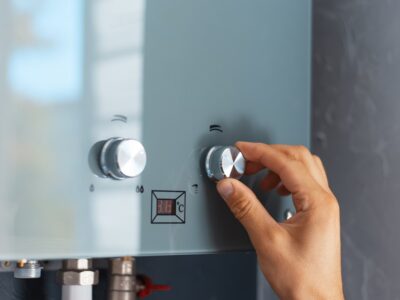Key Takeaways:
- Creating a pleasant acoustic environment is crucial for well-being, productivity, and health.
- Fiberglass sound panels effectively absorb and reduce unwanted noise.
- There are different types of fiberglass sound panels for various applications.
- Benefits of fiberglass sound panels include improved sound quality, noise reduction, speech intelligibility, aesthetic appeal, and eco-friendliness.
- Proper installation, including selecting the right panels and considering factors like mounting locations and panel orientation, is important for optimal effectiveness.
- Maintain and assess the panels regularly, explore combinations with other acoustic treatments, and stay updated on advancements for maximizing benefits.
- Future trends in acoustic environment enhancement include smart acoustic solutions, customization, sustainability, and virtual acoustics.
1. The Science Behind Acoustic Environment Enhancement
Creating a pleasant and enjoyable acoustic environment is not only about aesthetics; it also has a profound impact on our overall well-being. Sound quality plays a crucial role in our surroundings, affecting our mood, productivity, and even our physical health. When the ambient noise levels are too high or inconsistent, it can lead to increased stress levels, fatigue, and reduced concentration.
Why Sound Quality Matters in Our Surroundings
Sound quality refers to the subjective perception of audio characteristics in any environment. Whether it’s a home, office, or public space, the quality of sound greatly contributes to our overall experience. Imagine entering a bustling coffee shop where the chatter and background music blend together harmoniously, creating a soothing atmosphere. In contrast, a poorly soundproofed space may transmit unwanted sounds from outside, such as traffic or construction noise, disrupting our ability to focus and enjoy the environment.
The Impact of Acoustic Environment on Health and Well-being
Research has shown that constant exposure to high levels of noise can have detrimental effects on our health. Prolonged exposure to noise pollution has been linked to increased stress, cardiovascular issues, and sleep disturbances. Noise can affect the body’s physiological responses, triggering the release of stress hormones like cortisol and adrenaline. This chronic activation of the stress response can lead to long-term health problems.
Furthermore, a poor acoustic environment can also impact our mental well-being. Excessive noise can interfere with concentration, causing irritability, decreased motivation, and reduced productivity. It can also affect our ability to relax and unwind, contributing to feelings of restlessness and anxiety.
Fiberglass Sound Panels: The Solution to Noise Pollution
Fiberglass sound panels from Sound Fighter Systems offer an effective solution to combat the negative effects of noise pollution and create a more serene environment. These panels are specially designed to absorb and reduce unwanted noise, improving sound quality and enhancing the overall acoustic environment.
Fiberglass sound panels are made from high-quality acoustic fiberglass materials that have excellent sound absorption properties. They work by absorbing sound waves through the dense fiberglass material, converting the acoustic energy into heat energy. This process reduces the intensity of sound reflections and reverberations, resulting in a quieter and more comfortable space.

2. Understanding Fiberglass Sound Panels
To fully appreciate the benefits of fiberglass sound panels, it’s essential to understand how they work and the different types available.
The Role of Fiberglass in Sound Absorption
Fiberglass material is widely used in sound absorption products due to its excellent ability to absorb sound waves. The intricate internal structure of fiberglass panels, comprising densely packed glass fibers, creates a highly effective sound-absorbing barrier. When sound waves hit the panels, the fibers dissipate the energy, reducing the reflection and transmission of sound.
The dense composition of fiberglass panels also helps to trap and absorb low-frequency sounds, which are typically more difficult to control. This makes them a versatile solution for a wide range of environments, from small offices and recording studios to large auditoriums and concert halls.
Different Types of Fiberglass Sound Panels
There are several types of fiberglass sound panels available, each designed with specific applications in mind. Some common types include:
- Wall-mounted panels: These panels are typically installed on walls to absorb sound reflections and reduce echo within a room.
- Ceiling-mounted panels: Ideal for spaces with high ceilings, these panels help control sound reflections and reverberations from above.
- Freestanding panels: These portable panels are designed to be placed strategically in a room to reduce excessive noise and create acoustic balance.
- Bass traps: Specifically designed to absorb low-frequency sound waves, bass traps are essential for controlling room resonances and preventing unwanted reverberations.
By selecting the appropriate type of fiberglass sound panels for your space, you can effectively address the specific sound-related challenges you may be facing.
Benefits of Using Fiberglass Sound Panels
Using fiberglass sound panels offers numerous benefits, making them a popular choice for enhancing acoustic environments:
- Improved sound quality: Fiberglass panels effectively absorb sound waves, reducing echoes and reverberations, ultimately improving the overall sound quality in the space.
- Noise reduction: By absorbing sound energy, these panels reduce the transmission of external noise, providing a quieter and more peaceful environment.
- Speech intelligibility: Sound reflections and reverberations can make it challenging to understand speech clearly. Fiberglass sound panels mitigate these issues, enhancing speech intelligibility in classrooms, conference rooms, and other similar settings.
- Aesthetic appeal: Fiberglass sound panels come in various designs and finishes, allowing them to blend seamlessly into any aesthetic or interior design scheme.
- Eco-friendly: Many fiberglass sound panels are made from recycled materials, making them an environmentally sustainable choice.
These benefits combine to create a comfortable and acoustically optimized space, enhancing the overall experience for occupants or visitors.
3. Installing Fiberglass Sound Panels
Installing fiberglass sound panels requires careful consideration to ensure optimal placement and effectiveness.
Choosing the Right Fiberglass Sound Panels for Your Space
When selecting fiberglass sound panels, it’s important to consider factors such as the size of the room, intended use of the space, and the specific acoustic challenges you are looking to address. Consulting with an acoustic professional can help determine the most suitable type and quantity of panels for your needs.
Additionally, considering the aesthetic aspects of the panels is important, as they should seamlessly integrate into the space without compromising the overall design.
Factors to Consider When Installing Fiberglass Sound Panels
Proper installation is crucial to ensure the effectiveness of fiberglass sound panels. Some factors to consider include:
- Mounting locations: Identify the areas where sound reflections and reverberations are most pronounced and install the panels strategically in those locations.
- Panel orientation: Depending on the type of panels used, proper orientation—vertical or horizontal—may be necessary to achieve the desired sound absorption performance.
- Spacing and coverage: Determine the ideal spacing between panels to achieve uniform sound absorption throughout the space. Coverage should consider areas with higher sound reflection surfaces.
- Installation method: Fiberglass sound panels can be mounted directly onto walls, ceilings, or freestanding frames. Ensure proper installation techniques are followed to guarantee secure and stable placement.
By considering these factors, you can optimize the effectiveness of fiberglass sound panels and create an acoustically balanced environment.
Step-by-Step Guide to Installing Fiberglass Sound Panels
While the exact installation process may vary depending on the specific panels and space, here is a general step-by-step guide to installing fiberglass sound panels:
- Prepare the space: Clear the area where the panels will be installed, ensuring a clean surface free from any obstructions.
- Mark the mounting locations: Use a level and measuring tape to mark the precise spots where the panels will be mounted.
- Install mounting hardware: Depending on the type of panels and the mounting method, install any necessary mounting brackets or clips onto the walls or ceilings.
- Attach the panels: Carefully affix the fiberglass sound panels onto the mounting hardware, ensuring they are securely in place.
- Test the acoustics: Once the installation is complete, test the acoustics of the space to determine if any adjustments or additional panels are required.
Following these steps will help you professionally install fiberglass sound panels, maximizing their effectiveness and improving the acoustic environment of your space.
4. Transforming Your Acoustic Environment with Fiberglass Sound Panels
Realizing the full potential of fiberglass sound panels goes beyond their installation. Here are some additional considerations to maximize the benefits:
Real-Life Case Studies: How Fiberglass Sound Panels Have Made an Impact
Examining real-life case studies can provide valuable insights into the transformative effects of fiberglass sound panels. These studies showcase how various spaces, such as classrooms, offices, and entertainment venues, have significantly improved their acoustics, resulting in enhanced user experiences and improved outcomes.
Examples include classrooms where student engagement and learning outcomes have improved due to reduced distractions, or offices where productivity has increased due to a quieter and more focused work environment.
Maximizing the Benefits of Fiberglass Sound Panels
To ensure you are getting the most from your fiberglass sound panels, consider the following tips:
- Regular maintenance: Keep the panels clean and free from dust or debris, as this can impact their sound absorption capabilities.
- Periodic assessment: Regularly assess the acoustic environment to identify any changes or new challenges that may require adjustments or additional panels.
- Combine with other acoustic treatments: Depending on the specific acoustic needs, combining fiberglass sound panels with other solutions, such as diffusers or bass traps, can further enhance the overall sound quality.
- Stay updated on advancements: Follow developments in the field of acoustic environment enhancement to stay informed about new technologies and trends that may offer even greater benefits.
By implementing these strategies, you can optimize the performance of fiberglass sound panels and continuously improve the acoustic environment of your space.
Future Trends in Acoustic Environment Enhancement
The field of acoustic environment enhancement is continually evolving, driven by advancements in technology and a growing understanding of the impact of sound on our well-being. Some future trends to watch for include:
- Smart acoustic solutions: Integration of intelligent systems that can automatically adjust sound levels and optimize acoustics based on real-time environmental factors.
- Customization and personalization: Tailoring acoustic environments to individual preferences, allowing for a personalized listening experience in public spaces.
- Sustainable materials and practices: Increasing focus on using eco-friendly materials and sustainable practices in the production and installation of acoustic solutions.
- Virtual acoustics: Advancements in virtual reality and augmented reality technologies may allow for immersive acoustic experiences and simulations.
As research continues to uncover the intricacies of sound and its impact on well-being, these trends will shape the future of acoustic environment enhancement, pushing the boundaries of what is possible.
In conclusion, fiberglass sound panels offer an effective solution to enhance acoustic environments, improving sound quality and reducing noise pollution. Understanding the science behind their effectiveness, selecting the right panels, and installing them properly are key to maximizing their benefits. By incorporating fiberglass sound panels into your space, you can transform the acoustic environment, leading to increased well-being, productivity, and overall satisfaction.








Comments